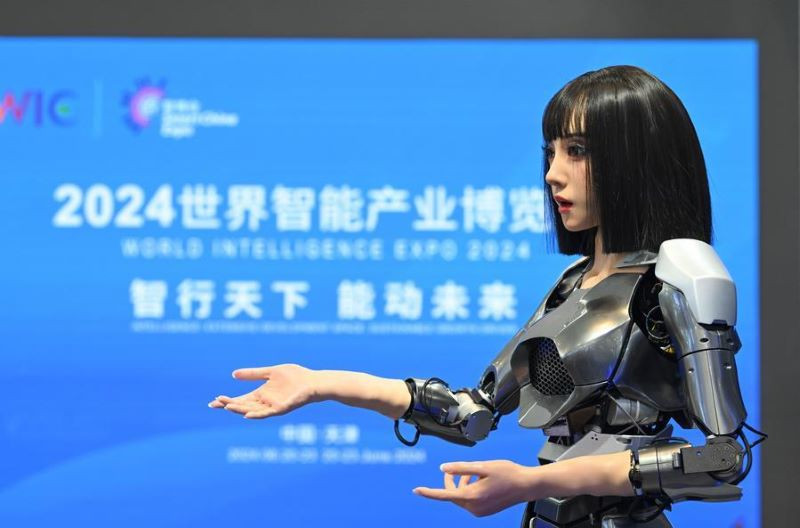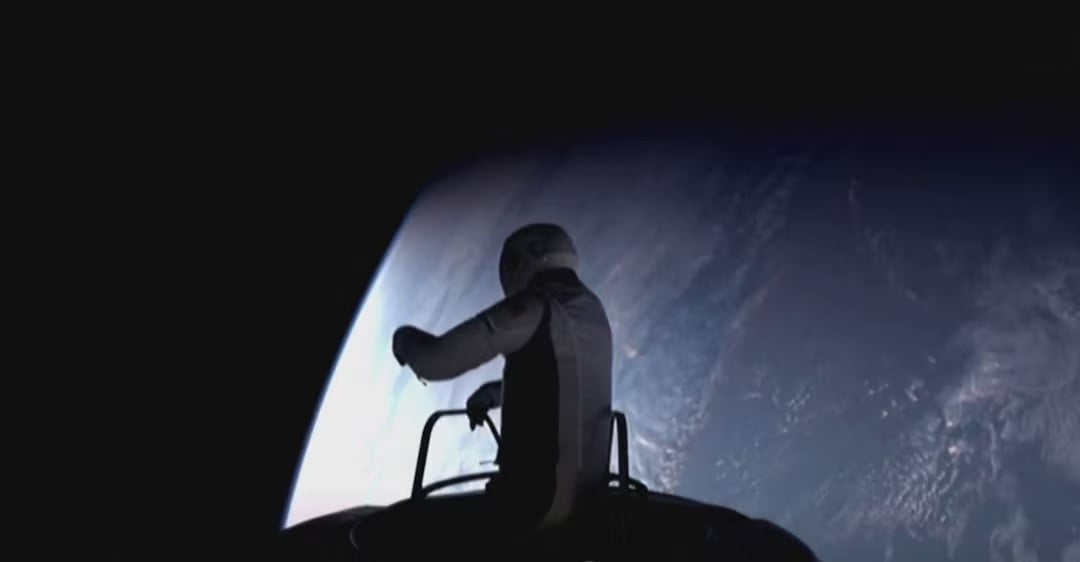TIANJIN:
With her sleek shoulder-length hair, high heels, figure-hugging outfit and flawless makeup, Xiaoqi stands elegantly in the exhibition hall, ready to answer a myriad of questions.
She is kind, empathetic and knowledgeable. But here’s the twist: Xiaoqi isn’t human.
She is a humanoid robot created by Ex-Robots, a company based in China’s northeastern city of Dalian, as advancements in artificial intelligence (AI) and robotics have brought these machines from the pages of novels and the screens of movies into practical, real-world applications.
Xiaoqi has been charming crowds at the 2024 World Intelligence Expo, which runs from Thursday to Sunday in north China’s Tianjin Municipality.
“Currently, we produce 400 to 500 robots per year,” said Qu Yan, who is in charge of media relations at Ex-Robots. “Our company designs more human-like robots, with enhanced facial expressions and the ability to foster an emotional connection with users, so we call them emotional interaction robots.”
At present, used primarily in museums and educational institutions, these robots could have broader application scenarios once their prices become more affordable, Qu said.
Humanoid robots — a technological convergence of AI, high-end manufacturing and new materials — are attracting increasing attention in China, both from investors and the government.
At the expo, various tech companies displayed lifelike robots capable of walking quickly, dancing, and even making coffee.
A crowd gathered to observe a demonstration by UBTECH Robotics Corp Ltd of Walker X, a 130 cm-tall humanoid robot showcasing its abilities to greet people, shake hands, perform Tai Chi and make heart gestures.
“We are dedicated to bringing humanoid robots to households,” UBTECH’s Chief Brand Officer Tan Min told Xinhua.
“The demand for humanoid robots could exceed 10 billion units in the future,” said Tan. “Each person could potentially own at least three to five robots for tasks ranging from work and companionship to household chores.”
Goldman Sachs Research estimates that the global market for humanoid robots may reach at least 6 billion US dollars in 10 to 15 years, potentially expanding to 154 billion US dollars by 2035 in a blue-sky scenario.
Industry insiders and agencies are optimistic that in the next five years, humanoid robots might enter households and provide a range of services.
Read: Bezos, Nvidia join OpenAI in funding humanoid robot startup
China aims to establish a preliminary innovation system for humanoid robots by 2025, according to a guideline from the Ministry of Industry and Information Technology. By 2027, the country will see a secure and reliable industrial and supply chain system, and related products will be deeply integrated into the real economy.
Foreign enterprises are also eyeing the realm of lifelike robots. Tesla unveiled its Optimus prototype in September 2022, aiming to produce 1 billion units annually after mass production, it told Xinhua.
Tesla’s factories plan to deploy over 1,000, possibly even thousands, of humanoid robots next year. It hopes to expand the application of these robots to sectors like elderly care — a function that is becoming increasingly vital due to population aging in many countries, including China.
Despite these advancements, challenges remain. Battery life and affordability are significant obstacles to the rapid market adoption of humanoid robots.
A visitor touches the fingers of a robot at the World Intelligence Expo 2024 in north China’s Tianjin, June 22, 2024. (Xinhua/Li Ran)
Humanoid robots are on a path to becoming another type of “disruptive innovation,” like computers, smartphones and new energy vehicles, profoundly transforming human production and lifestyle as well as reshaping the global industrial landscape, said industry insider Lu Hanchen.
Nicole Yandun from Ecuador had an engaging interaction with Xiaoqi. “She is smart and lifelike. What surprised me was that she can speak English,” Yandun said. “Lifelike robots can make our life and work easier in the future.”
However, Zeng Qiao, a university student in Tianjin, found the robot unsettling. “It’s scary. Her overall appearance made me uncomfortable, and her responses were not very intelligent,” Zeng said. “I also have concerns about the safety of humanoid robots.”
When addressing concerns about human-robot relationships, Xiaoqi offers her perspective: “My goal, along with my companions, is to help people enhance their quality of life and work efficiency, not to replace them.”


 Technology6 مہینے ago
Technology6 مہینے ago
 Pakistan7 مہینے ago
Pakistan7 مہینے ago
 Sports6 مہینے ago
Sports6 مہینے ago
 Pakistan6 مہینے ago
Pakistan6 مہینے ago
 Entertainment6 مہینے ago
Entertainment6 مہینے ago
 Sports5 مہینے ago
Sports5 مہینے ago
 Pakistan7 مہینے ago
Pakistan7 مہینے ago
 Entertainment6 مہینے ago
Entertainment6 مہینے ago









1726134115-0/BeFunk_-(41)1726134115-0.jpg)




